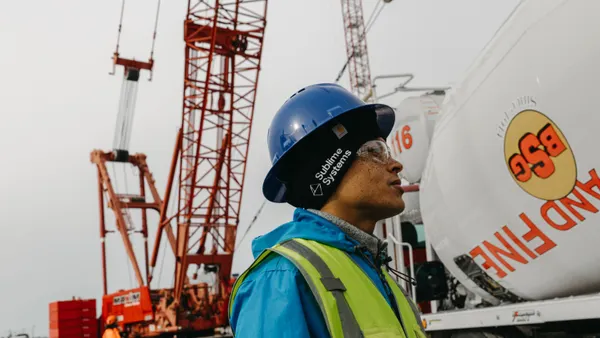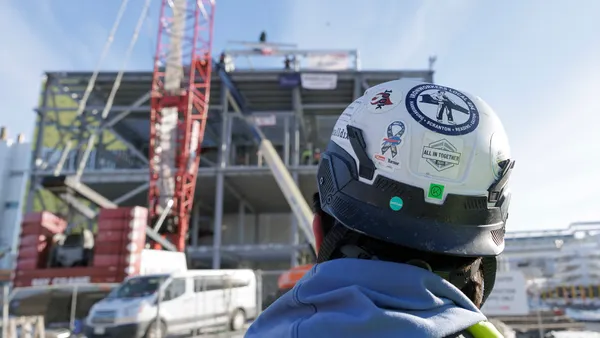Dive Brief:
- Scientists at the Department of Energy's Oak Ridge National Laboratory who study methods for eliminating water contaminants have discovered a way to capture carbon dioxide directly from the atmosphere. Using aqueous guanidine solutions, the process offers a possible solution to capturing and storing atmospheric carbon dioxide loads suspected of contributing to global warming.
- When exposed to open air, guanidine solutions develop crystals containing carbonate formed when carbon dioxide in the air reacts with water, the researchers found.
- The research team has developed a process for vaporizing carbon crystals at temperatures between 80 and 120 degrees Celsius and pipelining the released gas to storage reservoirs deep underground, according to R&D Magazine.
Dive Insight:
Used as a base in plastics and explosives and a naturally occurring compound in human urine, guanidine was being explored as a possible additive to remove sulfates and phosphate contaminants from water when ORNL researchers uncovered the carbon-capture properties of guanidine solutions. While the carbonate crystals grew at the reaction line between air and water, researchers believe the discovery could be adapted to capture carbon dioxide emissions directly from industrial sources.
Carbon capturing crystals are not new, but prior to their formation in guanidine, it required vaporization at temperatures up to 900 degrees Celsius — a process that ended up creating more CO2. Guanidine’s much lower vaporization temperature could be accomplished via solar energy, and has ORNL scientists hopeful the process could advance carbon capture and storage to mitigate atmospheric CO2 contributing to global warming.
Industrial carbon capture at the source is also a developing technology. NRG Energy this week announced deployment of a $1 billion carbon capture system designed to pull 90% of CO2 from a 240 MW, coal-fired power plant near Houston, with the Department of Energy providing $190 million in funding to complete the project. Once captured, NRG is pipelining the carbon dioxide gas to oil wells, where it is injected to extract additional oil deposits.













